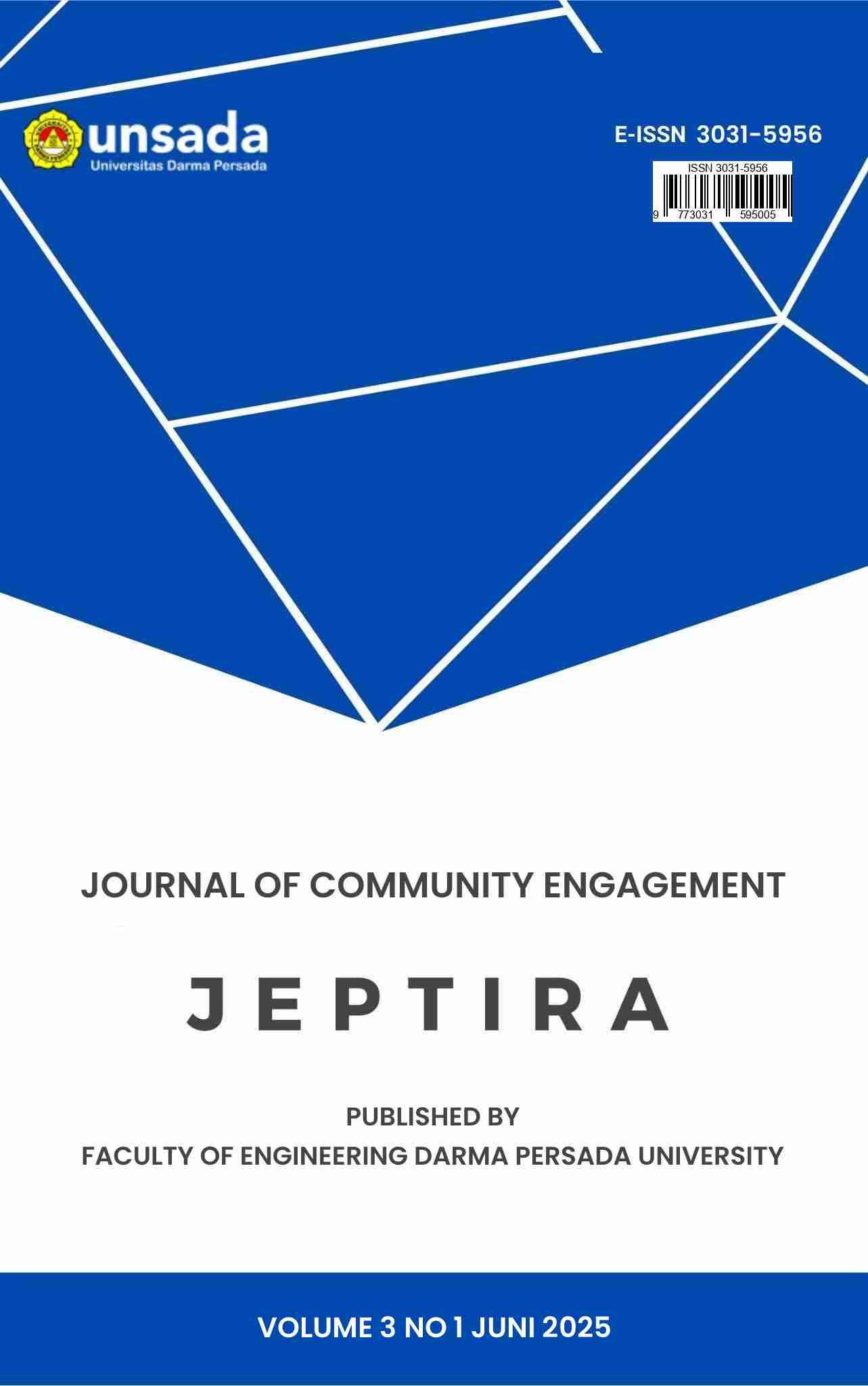Advanced Prompting Techniques for Artificial Intelligence-Based Learning Innovation
Main Article Content
Abstract
This community service program was designed to strengthen the capacity of teachers and lecturers in utilizing advanced prompting techniques based on Artificial Intelligence (AI) to support instructional innovation. The focus of the training was on two effective methods Chain of Thought (CoT) and Role Prompting which enhance human-AI interaction in educational contexts. The activity was conducted through face-to-face workshops involving 25 participants from various educational institutions, combining theoretical explanations, hands-on practice, and case-based discussions. Participants learned how to construct structured and contextual prompts for teaching applications such as lesson planning, explanation of concepts, and simulation-based learning. Evaluation results showed a significant improvement in participants’ understanding and ability to apply prompt engineering strategies, as reflected in both assessment scores and the quality of practical outputs. The program also contributed to raising awareness about ethical AI usage in education and emphasized the role of digital literacy in enabling educators to adapt to the demands of digital transformation.
Article Details

This work is licensed under a Creative Commons Attribution 4.0 International License.
References
E. Mollick and L. Mollick, “Using AI to Implement Effective Teaching Strategies in Classrooms: Five Strategies, Including Prompts,” Social Science Research Network, Jan. 2023, doi: 10.2139/ssrn.4391243.
Marković-Blagojević, M., Simonović, D., & Milenković-Anđelković, A. (2024). The impact of AI and Chat GPT on education and the role of the teacher. 404–414. https://doi.org/10.5937/eee24038m
P. L. C. Lam, W. K. W. Chan, and H. L. Wong, “Exploring teachers’ perceptions and readiness of applying ai in teaching and learning in higher education,” ICERI proceedings, Nov. 2023, doi: 10.21125/iceri.2023.1339.
G. Sadykova and A. Kayumova, “Educators’ Perception of Artificial Intelligence as Instructional Tool,” TEM Journal, pp. 3194–3204, Nov. 2024, doi: 10.18421/tem134-54.
B. Wang et al., “Towards Understanding Chain-of-Thought Prompting: An Empirical Study of What Matters,” Jan. 2023, doi: 10.18653/v1/2023.acl-long.153.
L. Hu et al., “Understanding Reasoning in Chain-of-Thought from the Hopfieldian View,” arXiv.org, vol. abs/2410.03595, Oct. 2024, doi: 10.48550/arxiv.2410.03595.

